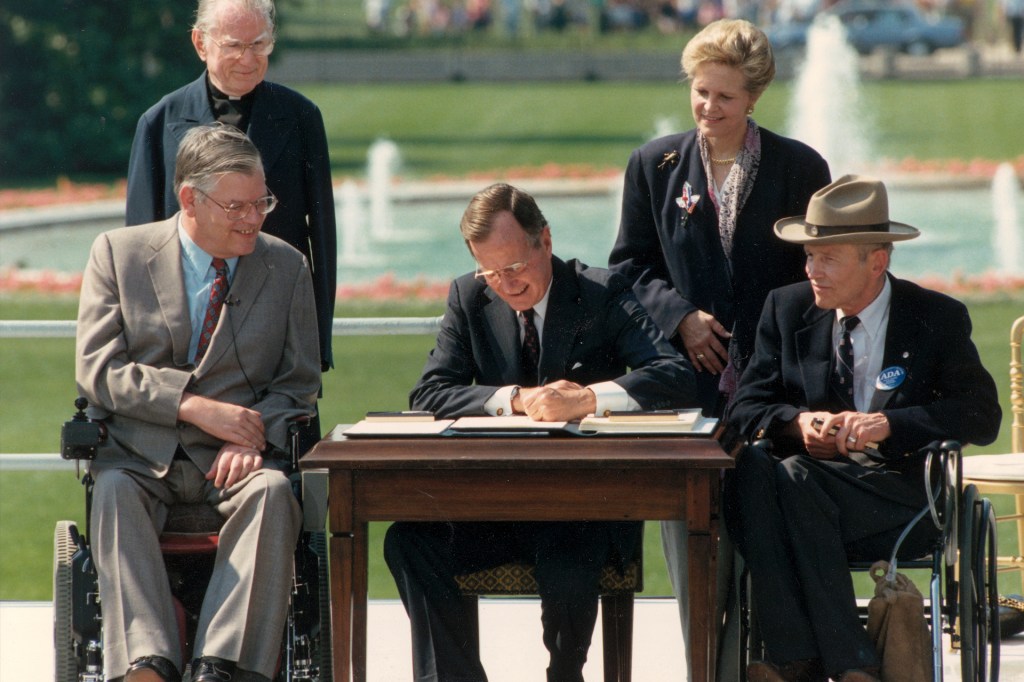Landmark Law

In 1952, Judy Heumann went to register for kindergarten. But the principal stepped in. He told Heumann’s mom that her daughter was not allowed to attend the school.
That was because Heumann had a disability. As a child, she had polio, a disease that can affect the spinal cord. It left her with limited use of her arms and hands, and with paralyzed legs. She used a wheelchair to get around.
Heumann went on to get an education. She became a teacher and an activist. But because of her disability, she had to fight for access at every turn.
“It’s totally different today,” she says.
That’s thanks in large part to the Americans with Disabilities Act (ADA). This civil-rights legislation was signed into law 30 years ago this month, on July 26, 1990. It was designed to protect people with disabilities against discrimination. It helps make sure that they can participate fully in different activities.
Under the ADA, schools and workplaces are now required to have ramps, elevators, designated parking spots, and curb cuts. (Curb cuts are small ramps built into a curb or sidewalk.) These places must also accommodate people with a range of disabilities, including people who are blind or deaf.
The Making of the ADA
The ADA was decades in the making. In the years before it passed, activists worked hard. They held many demonstrations. One was a 28-day sit-in. It took place at a federal government building in 1977. Heumann helped organize the event.
As lawmakers debated the measures, activists stuck together. Their unity ensured that the ADA would eventually protect people with all kinds of disabilities.
The results today are powerful: Many public buses have lifts for wheelchairs. Disabled children attend school alongside their nondisabled peers. Employers are generally aware that people with disabilities have civil rights that cannot be violated.
As President George H.W. Bush said in 1990, at the law’s signing ceremony, “It will guarantee fair and just access to the fruits of American life, which we all must be able to enjoy.”
The ADA was an important step. But activists say there is still more work to do so that people with disabilities are treated fairly. A new generation of activists is pushing the disability rights movement in new directions. For example, they want to address racial justice issues.
“It leaves us with this next call to action,” says activist Keri Gray. “How can we continue to uplift this piece of legislation, and how can we think about what else needs to come after it?”













